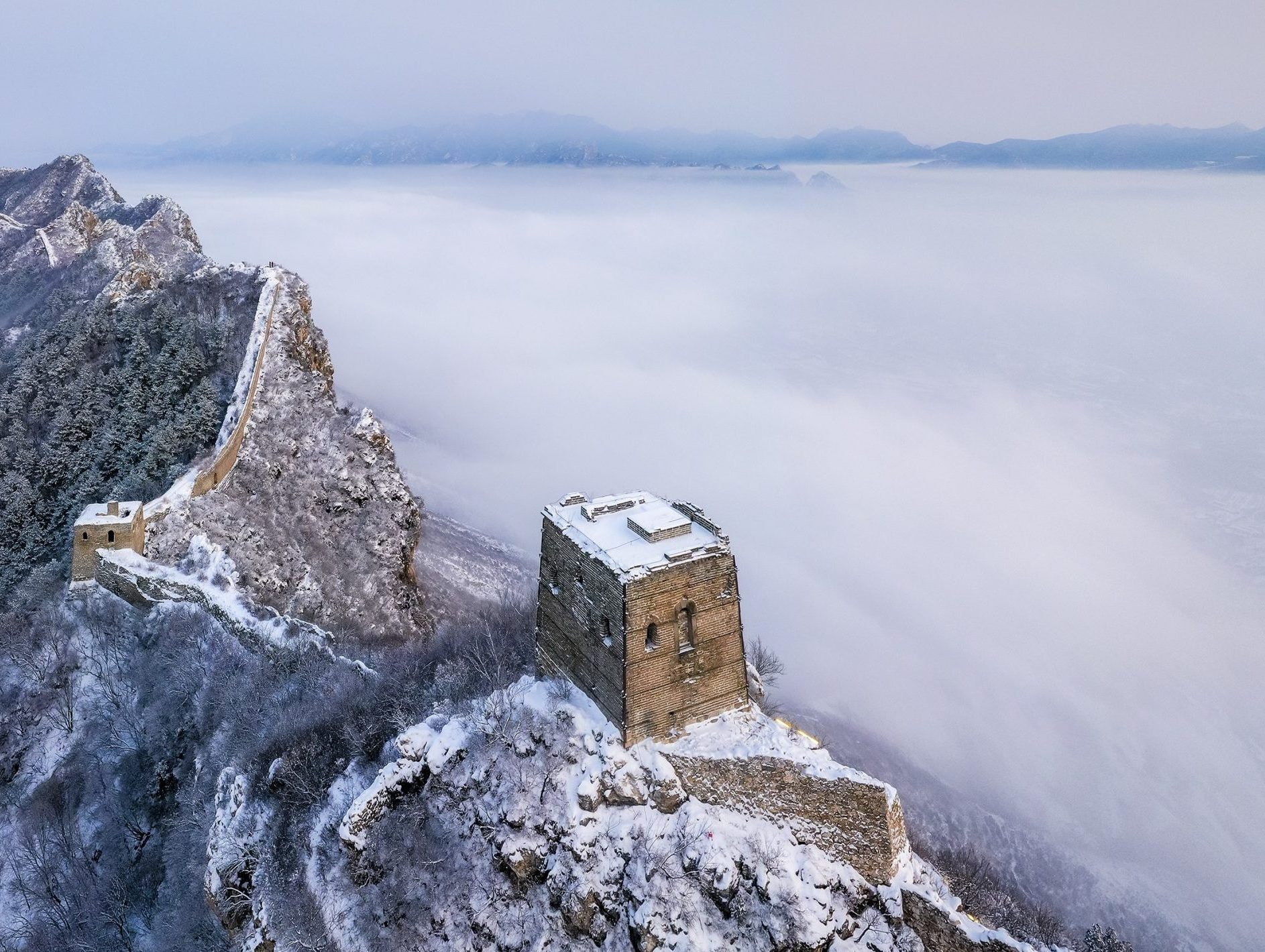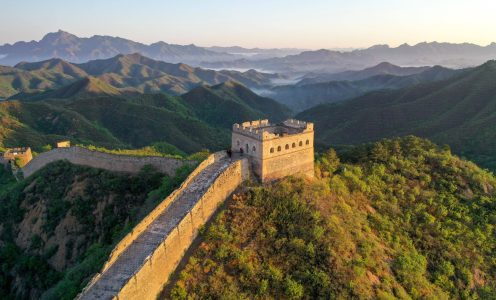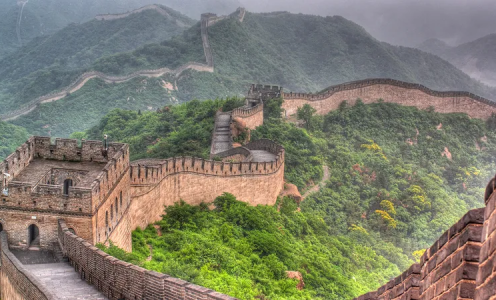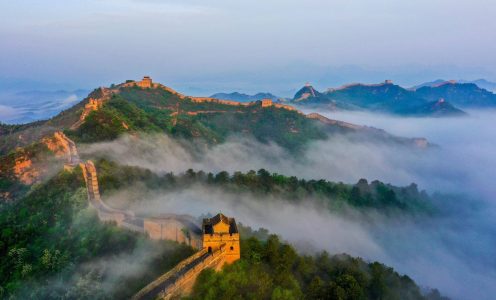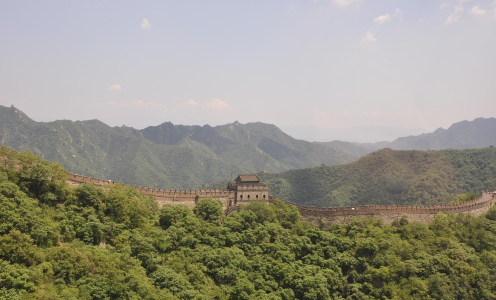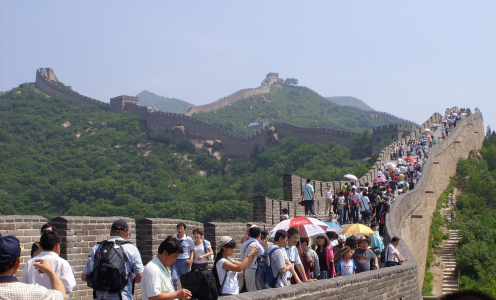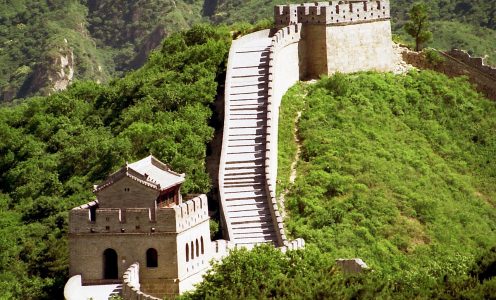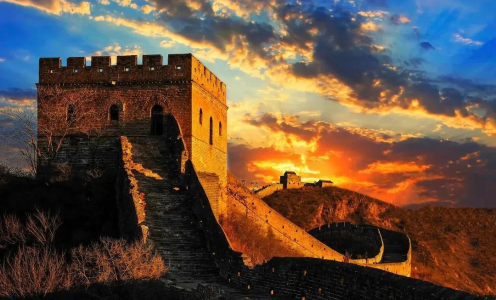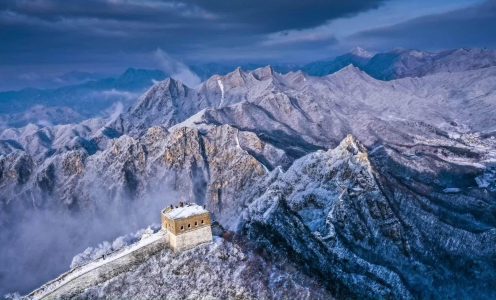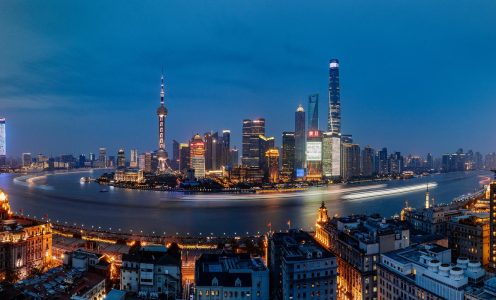Hiking the Great Wall of China is an exciting experience that offers beautiful scenery and a deep historical background. The area between Jinshanling and Simatai is one of the best parts of the Great Wall for hiking alone. It has a nice mix of well-kept and natural sections.
Why Hike Jinshanling to Simatai?
While popular parts of the Great Wall, like Badaling, draw many tourists, the stretch from Jinshanling to Simatai is less crowded and provides a quite and wonderful experience. With fewer people around, you’ll have more time and space to enjoy the stunning views of the Wall winding through the mountains, extending as far as you can see. Hiking without a guide lets you go at your own speed, stop for photos whenever you want, and really appreciate the beauty of the Wall.
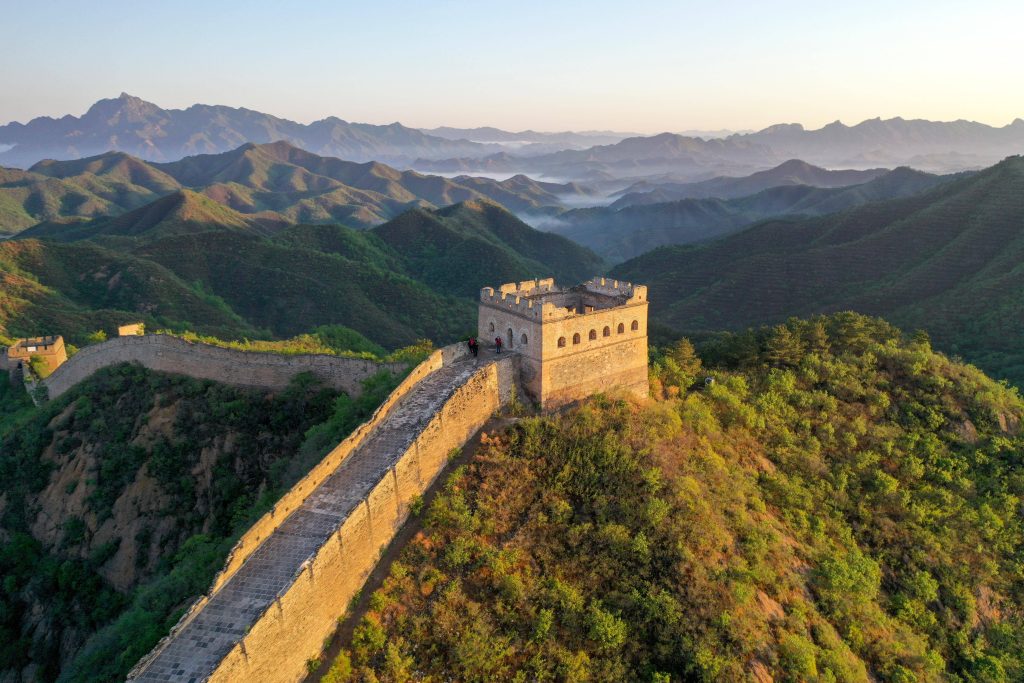
Opening hours of Jinshanling and Simatai:
1. Jinshanling Great Wall Opening Hours
- Peak Season (April 1—October 31)
- Opening Hours: 06:00—18:00 (Ticket sales stop at 17:00)
- Off-Season (November 1—March 31)
- Opening Hours: 07:00—17:00 (Ticket sales stop at 16:00)
2. Simatai Great Wall Opening Hours
- Daytime Opening Hours
- 08:00—17:30 (Ticket sales stop at 16:30)
- Night Tour Opening Hours
- 17:30—21:00 (Advance booking required; only certain sections are open for night tours)
CHECK BEFORE YOU GO!
Before you go, remember that the Great Wall may be closed for repairs sometimes. In 2025, parts of Simatai may be getting more repairs, so make sure to look for information about which sections of the Wall are open or closed. Make sure to check for updates before your trip. Always verify the latest rules and required permits to have a hassle-free experience.
Essentials Before Your Hike Get Fit
The hike from Jinshanling to Simatai is about 10 kilometers and takes 4 to 5 hours to finish. It’s important to get your body ready for the rough ground and steep uphill and downhill sections. It is not a simple walk, and it’s a good idea to practice walking on rough ground to get your legs ready.
The walk is fairly challenging, so be sure you’re in good health. If you don’t hike often, it’s a good idea to build up your leg and core strength before starting the trip.
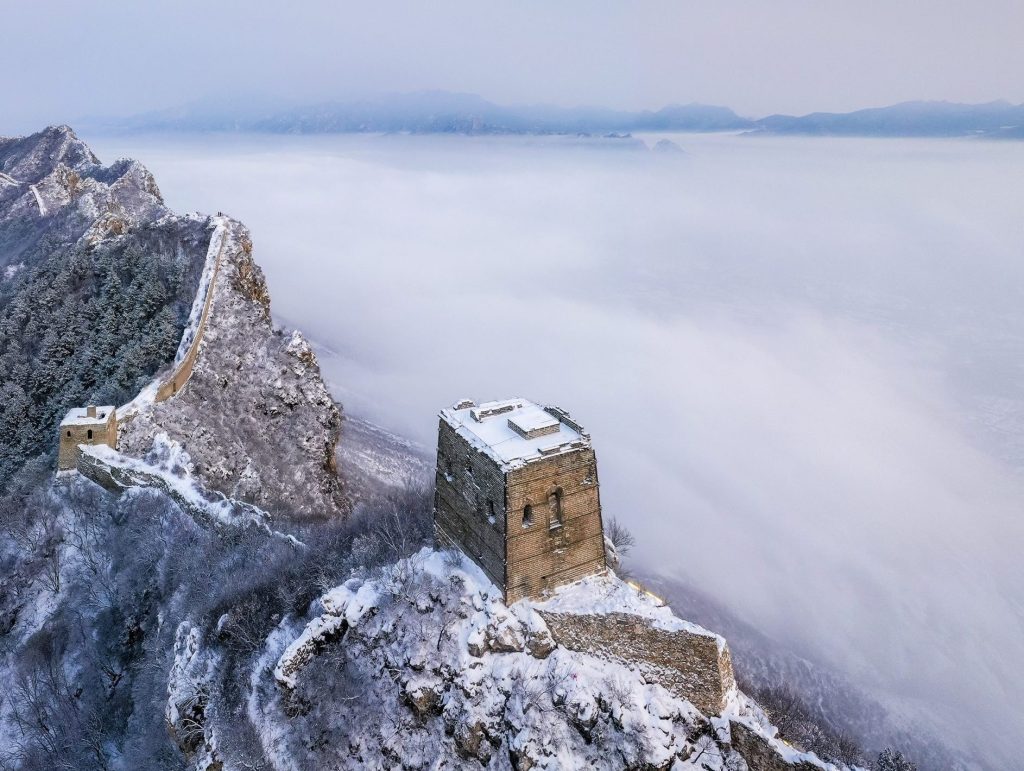
List of Equipment
To have a good walk, you need the right equipment. Here’s a plan to make sure you’re ready:
- Buy a good pair of climbing boots or shoes that support your ankles. The ground can be tough, so you need shoes that can handle rocks and rough areas.
- Sun protection: Even if you’re climbing in cooler months, the sun can be strong, so pack sunscreen, sunglasses, and a hat to protect yourself from UV rays.
- Stay hydrated. Always bring at least 2 liters of water, especially when climbing in the summer.
- Snacks: Take snacks that give you energy, like nuts, granola bars, or fruits, to keep you going during the trip.
- Offline plans/GPS: Although there are some signs along the Wall, it’s important to have offline plans, like Maps.me or AllTrails. These apps will help guide you in case you wander off the main road.
- A simple first aid kit with band-aids, antiseptic, and painkillers is a smart idea.
Licenses and Tickets
To hike the Great Wall from Jinshanling to Simatai, you must buy tickets for both parts. You can book these online in advance, and it’s a good idea to get your tickets early to avoid any delays. Depending on your route, you might be able to get a “through-hike” pass that lets you visit both Jinshanling and Simatai.
Weather and Timing
The best times to hike the Great Wall are in spring (April to June) and fall (September to November). The weather in these seasons is usually pleasant, and the scenery is beautiful. Summer can get very hot, with temperatures over 30°C (86°F), and winter can be very cold with snow, which makes climbing risky. Always look at the weather report before your trip and make plans based on it.
Getting to the Trailhead Traveling from Beijing to Jinshanling
To start your hike, go to the Jinshanling entrance. There are different ways to reach the site from Beijing.
Public Bus: The cheapest way to get to Jinshanling is by taking a public bus. You can catch direct buses to the Great Wall from Wangjing West Station in Beijing. The trip lasts about 2 to 2.5 hours, and buses operate regularly during the day. Tickets are cheap, but make sure to check the plan ahead of time, as it might change with the season.
Private Car/Taxi Hire: If you want more ease and quicker transportation, think about hiring a private car or taxi. A private car from Beijing to Jinshanling usually costs between ¥400 and ¥600, which is about $60 to $90 USD. If you are going with a group, try to negotiate the price to save money on the ride. Make sure to check the price before getting in, and if you can, book a driver ahead of time to avoid high prices.
Parking & Entry Logistics
When you get to Jinshanling, there are several parking lots for your car. If you’re driving, please park in the marked lots and follow the signs to the door. You can keep your luggage at the entrance if you need to. There are restrooms at the Jinshanling entrance, so you can take a break before you begin your walk.
Validating a ticket is easy. After you buy or show your pre-booked tickets, you’ll get a badge that allows you to enter the Wall. The hike starts at the main gate and takes you straight onto the Wall.
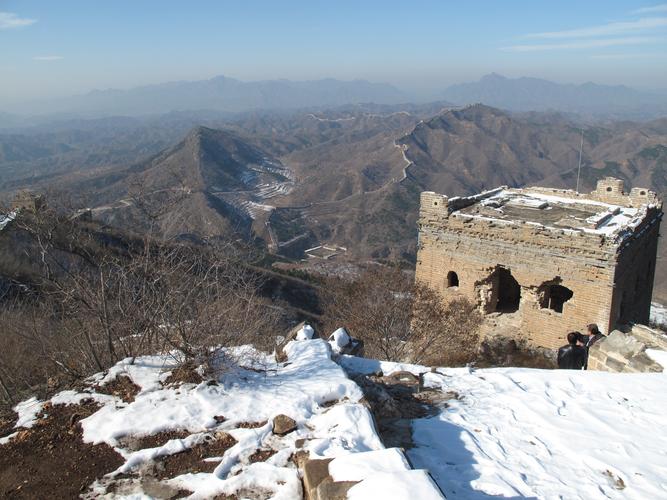
The Hike: Step-by-Step
Hiking from Jinshanling to Simatai is a fun experience. Whether you’re an experienced walker or a beginner, this trip will give you a great combination of challenges, stunning views, and interesting history.
The hike is around 10 kilometers (6.2 miles) long and usually takes 4 to 5 hours to finish, based on how fast you walk. The trail goes along the Great Wall, with some parts in good condition and others rougher. You’ll climb steep stairs, walk on uneven roads, and see parts of the Wall that look like they haven’t been changed in hundreds of years.
Get ready for some steep ups and downs. The Wall’s uneven surface can be difficult, especially in places where it hasn’t been fixed much, but it’s this roughness that makes this area unique. The trip is physically challenging, but the amazing views and the feeling of walking on a historic site make it worth it.
Important Places
While hiking from Jinshanling to Simatai, you will see famous sights like old watchtowers, broken walls, and parts of the Great Wall that provide great views of the nearby mountains. Here are some important places to watch for:
- General Tower: This is a very popular place for photos on the way. It stands high and provides a great view of the area around it. It’s a favorite spot to take a break and enjoy the wide view.
Fairy Tower: This is another beautiful spot. It’s in a striking part of the Wall, making it a great spot for taking shots with a historical setting. - Watchtowers: Along the path, there are several watchtowers that provide different views of the area around the Wall. Some are in good shape, while others are run-down, which makes the experience more exciting.
The views during the walk are amazing, so take your time and enjoy them. Bring your camera to record these moments because these landscapes are nothing short of magical. - Tips for Navigation
The Jinshanling to Simatai section is easy to follow in many areas, but it can get difficult the further you go into the Wall. Here are some tips to help you stay focused:
- Trail Markers: While hiking, you will see markers, signs, and lines that will show you where to go. These are very helpful when crossing areas that are a bit rough.
- Offline Maps: Because the Wall is far from cell towers, make sure to grab offline maps (like Maps.me or AllTrails) before you start your hike. These apps will help you find your way, even without cell service.
- Steering Clear of Mistakes: Pay close attention to the trail signs and stick to the tracks that many people have used. If you get lost in the wilderness, go back the way you came and look for better markers. Hiking alone can be scary, but with the right tools, it’s doable.
Entering Simatai.
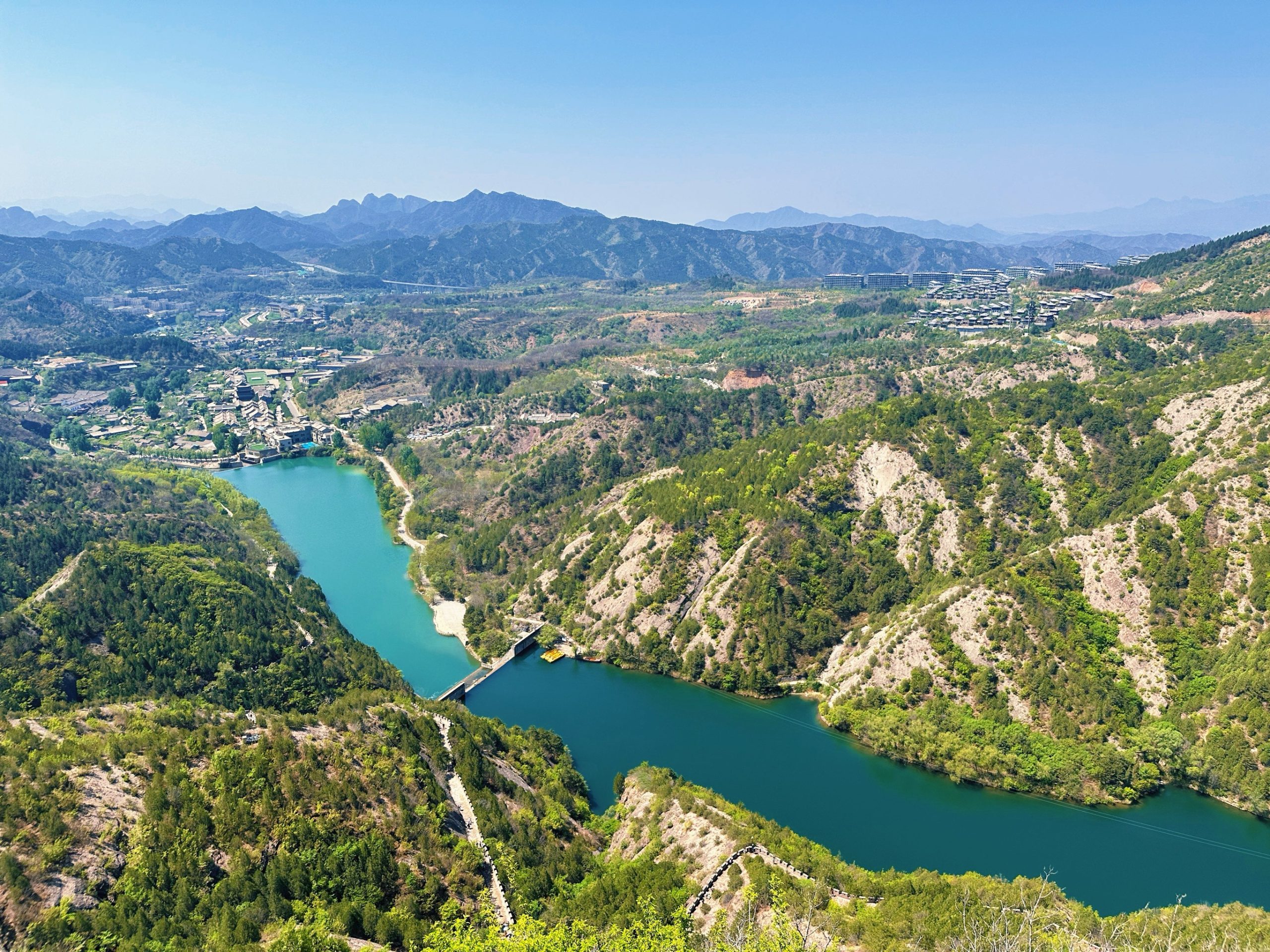
As you get close to Simatai, you’ll come across a stop where they check tickets. Make sure you have your ticket and wristband ready to be checked, as you need a legal pass to enter Simatai. The checkpoint process is fast, so you won’t waste much time.
When you enter Simatai, you’ll feel a difference in the mood. The Wall is usually in better shape here, with fewer rough areas. It’s a great spot to relax and take in the scenery.
After the Hike: Leaving Simatai
After finishing your hike, it’s time to go to your next place, whether that’s Beijing or somewhere else in China. Before you go, take a moment to think about the amazing journey you’ve just finished.
Travel back to Beijing
After you finish climbing, there are a few ways to get back to Beijing. The simplest option is to take a shuttle bus from Simatai to Gubei Water Town, and then take a bus or cab back to Beijing. Shuttle buses run at regular times and usually cost between ¥20 and ¥40 ($3 to $6 USD).
If you booked a private ride in advance, your driver will take you straight to Beijing or wherever you need to go next. You can find cabs outside the Simatai entrance, but they might be more expensive, especially if you are by yourself. A taxi ride in Beijing usually costs between ¥500 and ¥700 ($70 to $100), based on how well you negotiate.
Choices for Places to Stay
There are many places to stay near Simatai, especially in Gubei Water Town, which has a nice mix of modern facilities and traditional Chinese buildings. Gubei Water Town is a great spot to relax after your walk, with many guesthouses and small hotels to choose from. If you want a more luxury stay, you can choose a fancy hotel in Water Town, like the Gubei Water Town Resort.
If you’re looking to save money, there are many basic guesthouses and inns nearby that provide a nice place to sleep for a much lower price.
Tips for Staying Safe and Surviving
Hiking the Great Wall is exciting, but it’s important to be ready for the physical tasks and possible dangers. Here are some safety tips to keep you safe while you travel.
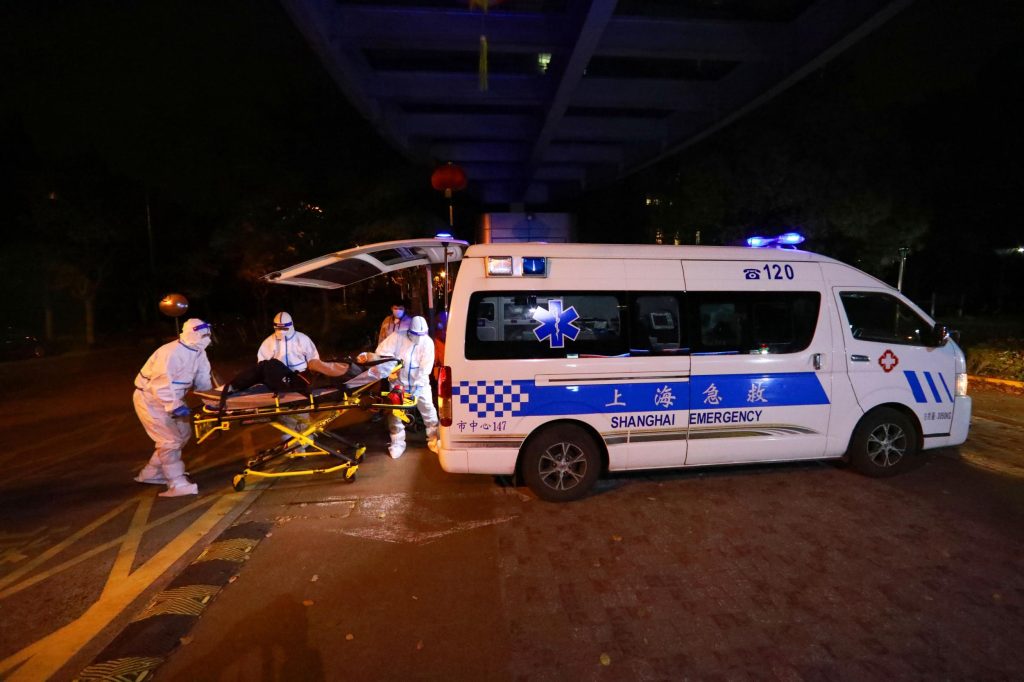
Emergency Contacts
The Jinshanling to Simatai area is mostly safe, but mishaps can still occur. It’s a smart move to keep emergency contacts ready.
- Local Rangers: If you need help on the Wall, you can reach out to the Great Wall Rangers. Their phone number is generally displayed at important points.
- Emergency Numbers: If there is a major injury or emergency, call 110 for police and 120 for an ambulance.
- Embassy Info: Keep the contact information for your country’s embassy in Beijing handy, just in case you face any major problems while hiking. Knowing simple SOS phrases in Mandarin, like “Wǒ yào bāng zhù” (I need help), can be very useful.
Dangers on the Trail
- Some parts of the Wall are well-kept, while others are rough and can be risky. Be careful where you step, especially on steep stairs and uneven stones. Always be attentive.
- Loose Bricks: Some parts of the wall have bricks that are loose or not even. Watch your step in these areas so you don’t trip.
- Weather Risks: In different seasons, there can be worries about heatstroke in hot weather or freezing in cold weather. Drink lots of water, wear a hat, and rest in the shade when it’s hot. When hiking in winter, be ready for icy weather and wear warm layers.
Wildlife and Manners
- Wildlife: There aren’t many wild animals on the Wall, but watch for snakes, insects, and small animals. If you see wild animals, stay calm, don’t bother them, and keep your distance.
- Respect the Wall: Always remember to “take nothing, leave nothing.” Please respect the Wall and don’t throw trash on the ground. Please pay attention to “no entry” signs and stick to the marked trails.
Responsibility for Culture and the Environment
As travelers, we should be aware of how we affect the world. The Great Wall is more than just a historical landmark; it’s an important part of our culture that deserves our attention and respect.
Preserving the Wall
The Great Wall is a UNESCO World Heritage site, and we must help protect it. Stay on the main paths and don’t go into places that are badly damaged or not fixed yet. If you see trash, please pick it up. It only takes a moment, and it helps keep this amazing place safe for future generations.
Keep in mind that the Great Wall is very old, and going on broken or weak parts can cause it to deteriorate faster. By being careful and polite, you can help keep this amazing piece of history safe.
Talking to Locals
When you hike the Great Wall, you might meet local sellers or people living nearby at the start of the trail. They are usually friendly, but it’s important to be respectful when you deal with them. If you don’t want to buy anything, a simple “no thank you” will do. It’s good to support local businesses, but make sure your buying choices actually benefit yourself.
8. Budget Breakdown (2025 Estimates): Making Your Yuan Stretch Further
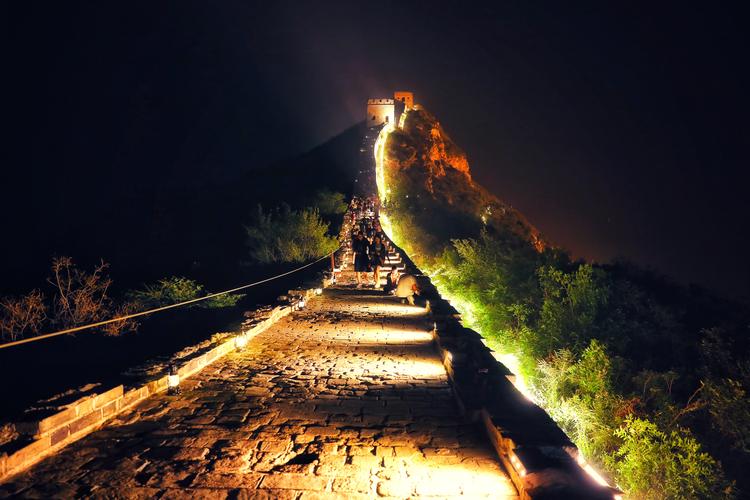
Let’s discuss money. You can hike the Great Wall without spending too much money. Here’s a summary of the expected costs for 2025. Keep in mind that these are only estimates and prices may change.
- Transportation costs range from ¥200 to ¥400. This is the biggest uncertainty. Public buses are the least expensive option, but they take a long time. Private cars are quicker but more expensive. Tip: If you’re looking to save money, find other tourists to share a car with and split the cost.
- Tickets: ¥80-150. This includes your entry fees for both Jinshanling and Simatai. Insider Tip: Booking online in advance can sometimes save you a few yuan and definitely saves you time queuing at the ticket office.
- Gear: Changeable. If you already own camping boots and other necessary items, the cost will be low. Buying everything can get expensive. I bought a good pair of hiking boots, and it was worth every penny. Being comfortable is very important!
- Food and drinks cost between ¥100 and ¥200. It depends on how you eat. Making your own lunch and snacks can help you save money.
Money-Saving Tips:
- Pack Smart: Bringing your own food and drinks is the best way to save money. Restaurants near tourist attractions are often too expensive.
- Travel Off-Season: If you can go on vacation in spring or fall, you will likely find lower prices for places to stay and ways to get around.
- Negotiate with respect. When renting a car or buying gifts, it’s okay to negotiate the price nicely. It’s a part of the culture.
- Use Public Transport: It may take longer, but it’s the cheapest choice.
- Stay in Guesthouses: Guesthouses provide simple but cozy places to stay for much less money than fancy hotels.
Other Options and Add-ons: From Jinshanling to Simatai:
Shorter/Longer Routes: The hike from Jinshanling to Simatai is a good choice, but there are other parts of the Wall to check out as well. The hike from Jinshanling to Gubeikou is longer and more difficult, while other parts have shorter walks that are easier and in different stages of repair. My suggestion: If you have some extra time, think about visiting the Mutianyu area. It’s well-restored and has beautiful views.
Things to See Nearby:
Gubei Water Town: You have to visit this place! It’s a lovely restored water town with canals, bridges, and traditional Chinese buildings. It’s really special at night. Don’t Miss: The night tour of Gubei Water Town is worth every yuan.
Simatai Cable Car: If you’re pressed for time or want to see the Wall from a new angle, you can take the cable car to a part of the Simatai Wall.
Frequently Asked Questions (FAQs): Your Burning Questions Answered
- Is a guide necessary? No, you can definitely hike the Jinshanling to Simatai section without a guide. Good navigation skills and an accurate GPS or offline map are very important.
- Solo or group? It’s always safer to hike with a group, especially in remote places. If you’re hiking alone, try to meet other hikers at your hostel or online.
- Cell phone service? Cell phone service is spotty in many areas of the hike. Before you leave, download maps to use offline on your phone. Tech Tip: It’s a good idea to have a compact power bank in case your phone battery gets low.
- What can you tell me about toilets? Restrooms are typically located at the entrance of Jinshanling and Simatai. Keep in mind that there aren’t many facilities along the way, so make sure to plan ahead.
- What should I do if I get lost? Stay cool and think back on what you did before. Use your map, compass, or GPS to locate the trail. If you’re not sure what to do, it’s best to stay where you are and wait for help.
- Are there shops along the trail? You may find some local sellers selling snacks and drinks, but it’s a good idea to bring your own supplies.
Hiking the Great Wall from Jinshanling to Simatai is an unforgettable experience. It’s an opportunity to go back in time, push your physical limits, and see some of the most beautiful views you’ll ever encounter. Be ready, respect nature and local customs, and enjoy the experience. This isn’t just a walk; it’s an event that you’ll always remember.
(Appendices)
Checklist: What You Need for Hiking
- [ ] Sturdy Hiking Boots (broken in!)
- [ ] Sun Protection (hat, sunglasses, sunscreen)
- [ ] Water (at least 2 liters per person)
- [ ] Snacks (high-energy, non-perishable)
- [ ] Offline Maps/GPS (with downloaded maps)
- [ ] First-Aid Kit (basic supplies)
- [ ] Headlamp/Flashlight
- [ ] Cash (for smaller vendors and guesthouses)
- [ ] Camera
- [ ] Layers (for changing weather conditions)
- [ ] Backpack (to carry everything comfortably)
B. Resources: Your Planning Toolkit
- Booking Platforms:
- [ ] Ctrip (for hotels and transportation)
- [ ] Booking.com (for hotels)
- [ ] Klook (for tours and activities – useful for booking airport transfers or day trips)
- Navigation Apps:
- [ ] Maps.me
- [ ] AllTrails
- Weather Sites:
- [ ] AccuWeather
- [ ] The Weather Channel
C. Basic Mandarin Phrases: Connecting with the Locals
- “这个多少钱?” (Zhège duōshǎo qián?) – How much is this?
Directions:
- “请问,长城在哪里?” (Qǐngwèn, Chángchéng zài nǎlǐ?) – Excuse me, where is the Great Wall?
- “往这边走。” (Wǎng zhèbiān zǒu.) – Go this way.
- “谢谢!” (Xièxie!) – Thank you!
Emergencies:
- “我受伤了!” (Wǒ shòu shāng le!) – I’m injured!
- “请帮帮我!” (Qǐng bāng bāng wǒ!) – Please help me!
- “救命啊!” (Jiùmìng a!) – Help!
Polite Interactions:
- “你好!” (Nǐ hǎo!) – Hello!
- “再见!” (Zàijiàn!) – Goodbye!
- “多少钱?” (Duōshǎo qián?) – How much?
- “不要。” (Bù yào.) – No, thank you. (Useful for politely declining vendors.)
other information: click there

